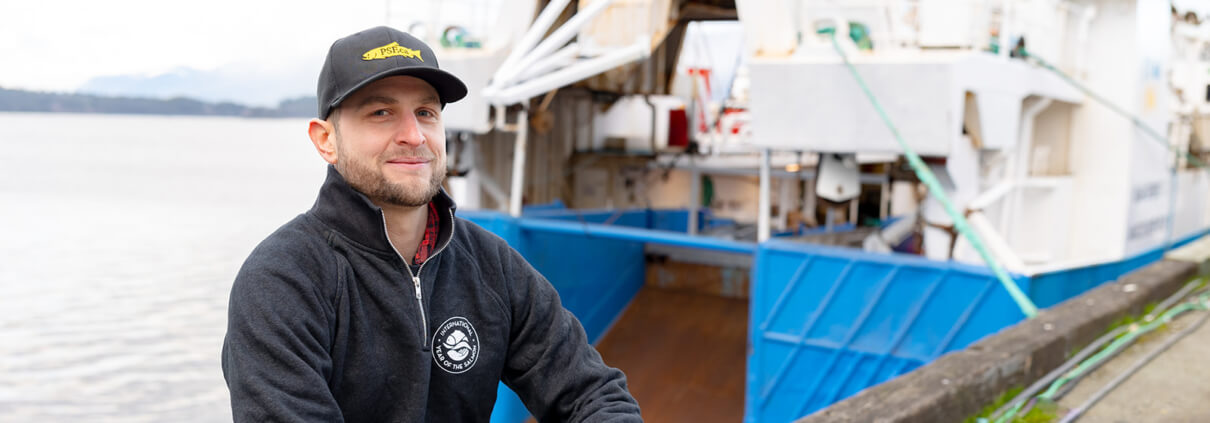Fresh from the Sea: Research clues help solve Pacific salmon mystery
As Dr. Christoph Deeg sets foot on dry land after weeks in the North Pacific as part of the 2022 International Year of the Salmon (IYS) High Seas Expedition, he brings back a host of clues to solve the mystery of factors that influence salmon mortality in the open ocean. His study follows up on research conducted in 2019 and 2020 during previous expeditions.
Deeg’s research in environmental DNA (eDNA) fills a gap in our understanding of salmon in the open ocean and enables us to study the biodiversity in ocean waters and compliments the fishing operations. His sampling for pathogens links salmon in the high seas with PSF’s Salmon Health Program’s studies in freshwater and nearshore environments.
Two scientific journals recently published these findings. Together, the studies provide the first report on the health, condition, and infections of Pacific salmon in the Northeast Pacific during the winter. The research team found hints that warmer than usual ocean temperatures and reduced prey availability were correlated with increased infection, highlighting the potential impact of future warming. Further, salmon that were found in unusually warm waters showed signs of stress and had more infections.
The research, funded by the North Pacific Anadromous Fish Commission and DFO’s BC Salmon Restoration and Innovation Fund, identifies two common parasites transmitted by salmon prey as key pathogens of all salmon species encountered, and suggests that they are transmitted in the open ocean. While Fit-Chips (see inset) showed that these common parasites had limited impact on the infected fish, several high impact infectious agents found in coastal waters were absent. Perhaps infected salmon recover or die before reaching the open ocean. More research is needed.
Also returning from research at sea on the 2022 IYS expedition, PSF scientist Svetlana Esenkulova is collecting eDNA samples and collaborating on research with Deeg for eDNA analyses. An integral part of the IYS field-sampling program and an expert in harmful algae, her focus at PSF is research in the Salish Sea.

Dr. Christopher Deeg and PSF scientist Svetlana Esenkulova
PSF is committed to a three year plan for the Salmon Health Program. If you are interested in donating to this program, please contact support@psf.ca.



